John Muir
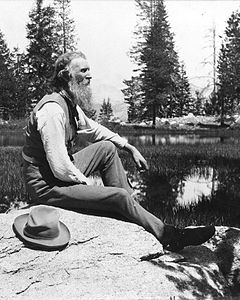
John Muir wrote in The Mountains of California:
Among the many unlooked-for treasures that are bound up and hidden away in the depths of the Sierra solitudes, none more surely charm and surprise all kinds of travelers than the glacier lakes. The forests and the glaciers and the snowy fountains of the streams advertise their wealth in a more or less telling manner even in the distance... All the upper branches of the rivers are fairly ladden with lakes, like orchard tress with fruit.
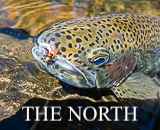
Fly Fishing the Sierra Nevada Mountains
The Sierra Nevada is one of California's most beautiful and diverse landscapes. From the foothills to the summit to the dramatic slope down along the east-side, there are vast opportunities for the angler.
Trout live in coldwater and the Sierra Nevada provides one of North America's premiere coldwater fisheries. The Sierra Nevada and adjacent Great Basin hold a variety of trout species which inhabit the hundreds of streams, ponds, and lakes found throughout this vast range. To gain an understanding of the Sierra Nevada's unique trout fisheries, the sections below provide an overview of the streams, lakes, native trout, and their food.
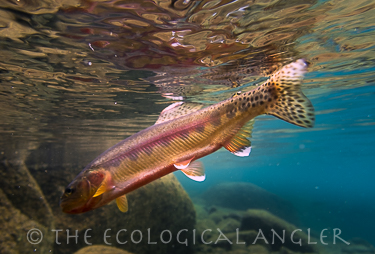
Sierra Nevada Streams
The streams of the Sierra Nevada can be organized into hundreds of small watersheds, which are subdivisions of larger watersheds. All streams on the west side of the range are ultimately part of the Sacramento–San Joaquin watershed, while on the east side, all streams ultimately flow into the Great Basin, in three discrete drainages (Lahontan, Mono, and Owens).

Streams by Watershed
Coming soon - a breakdown of the major watersheds of the Sierra Nevada highlighting some of the most productive and scenic streams in each region.
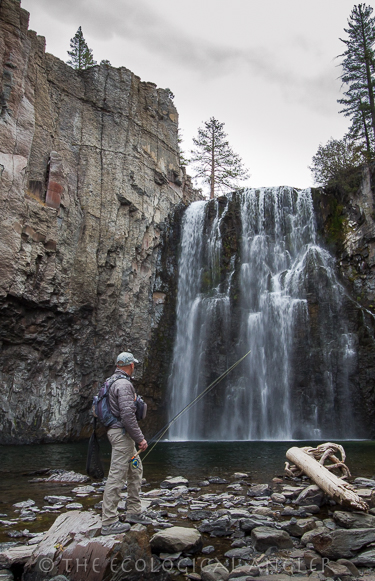
Sierra Nevada Lakes
The Sierra Nevada holds 4,000 lakes, probably 75% of which are big enough to support trout. A small percentage can be accessed by road, but most require some amount of hiking to fish their shores. Because the lakes have short ice-free seasons and are mostly in granitic, glacier-scoured basins, they produce little food for trout. Consequently, they support relatively low densities of trout, and the trout grow at slow rates, rarely exceeding 12 inches in length. Aside from roadside lakes stocked with hatchey trout, trout in the lakes come from two sources: natural reproduction and plants of fingerling trout. Brook trout compose the majority of naturally reproducing trout because they can be lake spawners.
The aquatic ecosystems of the High Sierra evolved and developed largely in the absence of fish. Most people may not be aware that nearly all of the lakes above 6,000 feet in the Sierra Nevada were originally fishless. Instead amphibians, insects and other aquatic invertebrates thrived in these lakes. It's only in the last 100 years that fisheries agencies and the ocassional herder stocked these lakes with trout.
Sierra Nevada Native Trout
Native trout of the Sierra Nevada were found in four distinct regions, which shared surprisingly few species among them: (1) the Sacramento–San Joaquin drainage; (2) the Lahontan drainage, consisting of the Carson, Susan, Truckee , and Walker Rivers; (3) the Eagle Lake drainage; and (4) the Owens drainage.
The Sacramento–San Joaquin drainage, which includes all watersheds on the west side of the Sierra Nevada range, supported a large and distributed population of coastal rainbow trout.
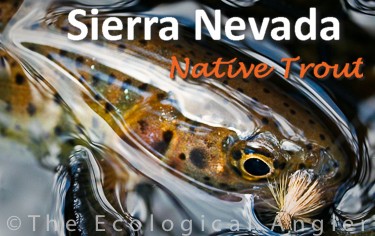
The Lahontan drainage occupies the northeastern portion of the Sierras and supported largely native cutthroat species. Lahontan cutthroat were the most widespread and abundant in the low to middle elevation rivers and lakes centered near Lake Tahoe.
Eagle Lake could be regarded as the northernmost part of the Lahontan drainage in the Sierra Nevada because it shares three fish species with the drainage, but it is an independent watershed that also supports an endemic subspecies of rainbow trout.
Native Trout of the Sierra Nevada
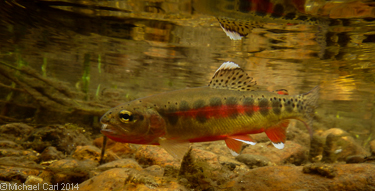 California Golden Trout
California Golden Trout
|
 Coastal Rainbow Trout
Coastal Rainbow Trout
|
|---|---|
 Kern River Rainbow Trout
Kern River Rainbow Trout
|
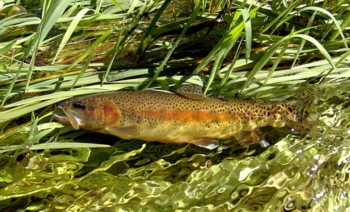 Little Kern Golden Trout
Little Kern Golden Trout
|
 Eagle Lake Rainbow Trout
Eagle Lake Rainbow Trout
|
 Lahontan Cutthroat Trout
Lahontan Cutthroat Trout
|
 Paiute Cutthroat Trout
Paiute Cutthroat Trout
|
The Owens drainage, also an eastern Sierra Nevada watershed, has its own distinct fish populations. These populations were largely confined to the Owens River and historically didn't hold trout. It was separated from the Lahontan drainage by the fishless Mono Lake basin (Moyle, 1996).
Bugs of the Sierra Nevada
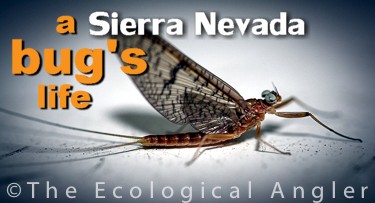
Pay close attention to these local bugs when fly fishing in the Sierra Nevada Mountains. Read more.
A Trout's 4 Major Food Groups
 Stoneflies
Stoneflies
|
 Caddisflies
Caddisflies
|
|---|---|
 Mayflies
Mayflies
|
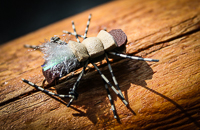 Terrestrials
Terrestrials
|
